A good badminton game starts with how you hold your racket which is the most important basic step. A good grip on badminton rackets can reduce injuries, increase the range of shots and produces more efficient hits.
A player may get carried away with the game that the first essential thing to do is forgotten hence results in poor performance and multiple mistakes during game. Incorrect grip will limit the range of strokes required in a dynamic badminton game.
There’s a coach from Denmark who has developed a new tool that would correct the way everyone should hold a racket. Check out more about this new tool at the end of this blog.
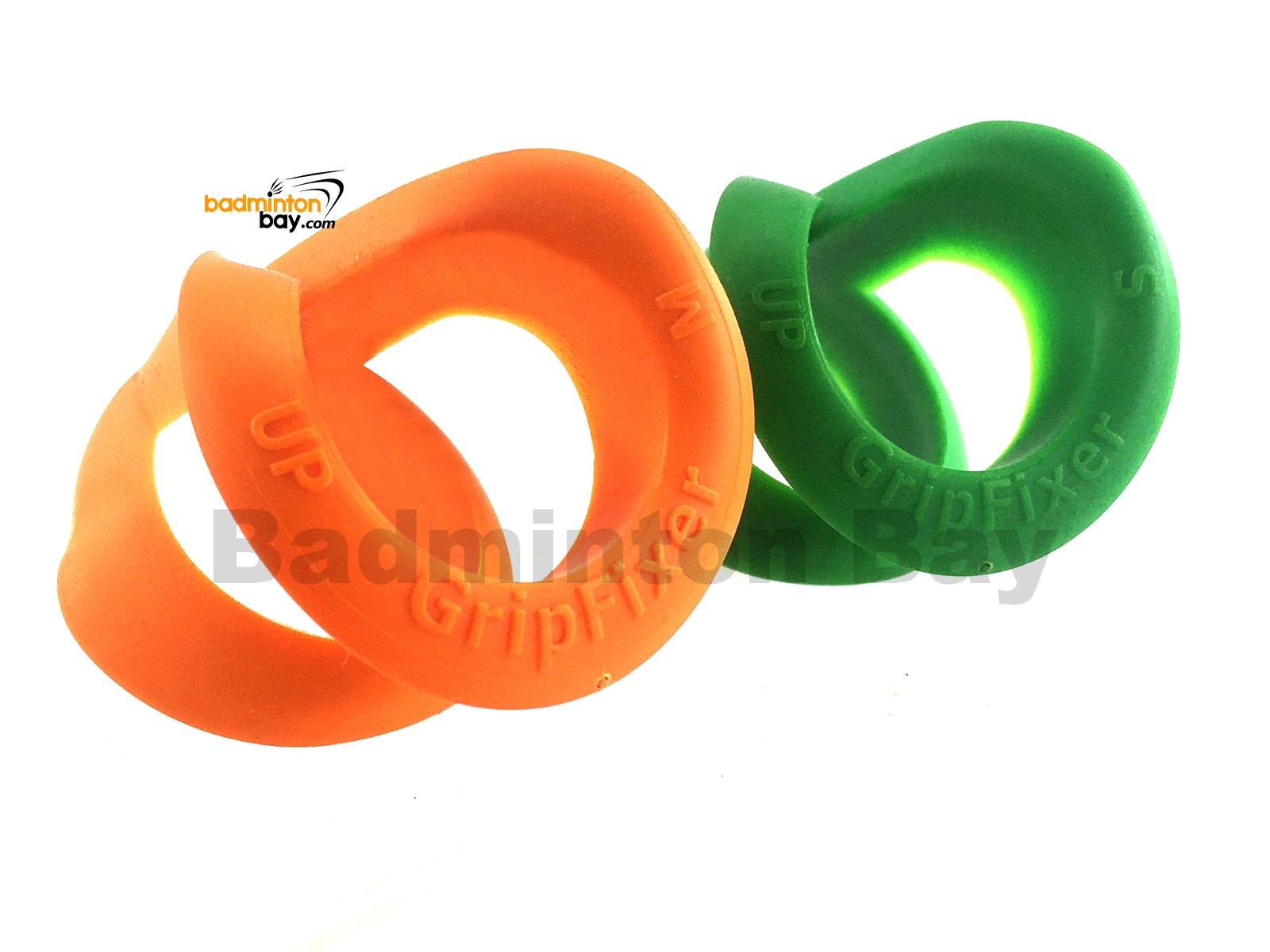
Here are clear visuals showing the angles and positions of how a racket should be held. Practise these easy steps until they become natural to you, the rest will go a long way.
1) Forehand Grip
Start by positioning your racket in this manner for the basic grip. Then hold the racket handle using a “hand-shake’ grip.
Do not grip too tightly. Gently hold the racket and you should still be able to move and twist the racket with flexible wrist movement. Clench tightly only when hit is executed. The ring and last finger are there to prevent racket slipping out of hands.
This grip method is safe to be used in almost all forehand shots.
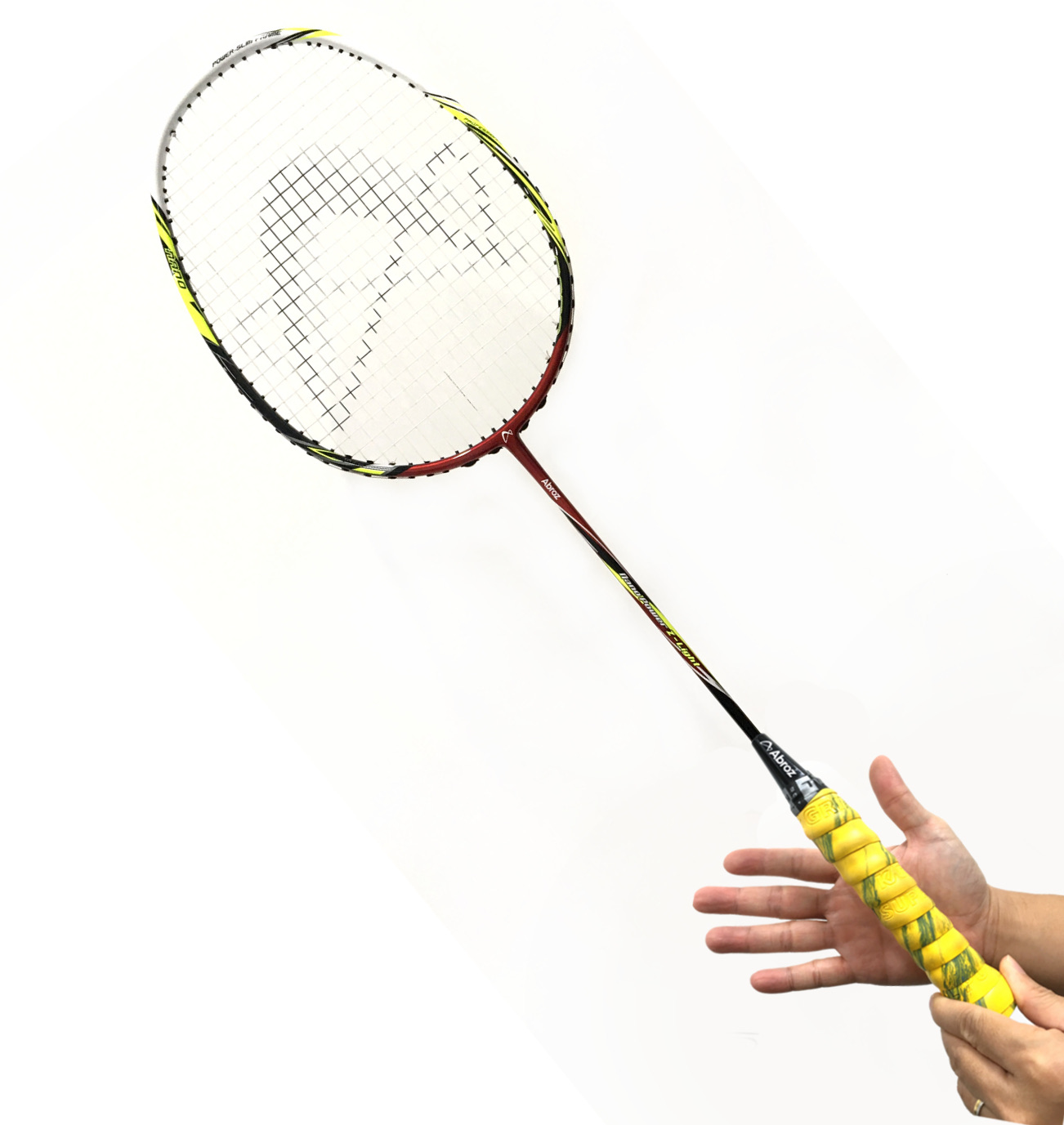
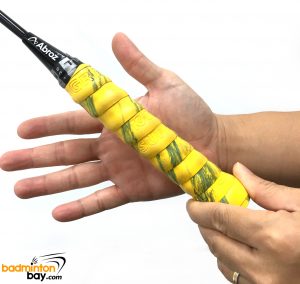
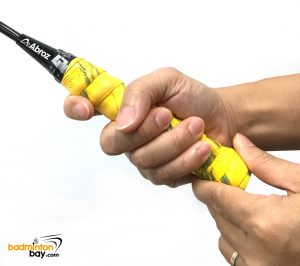
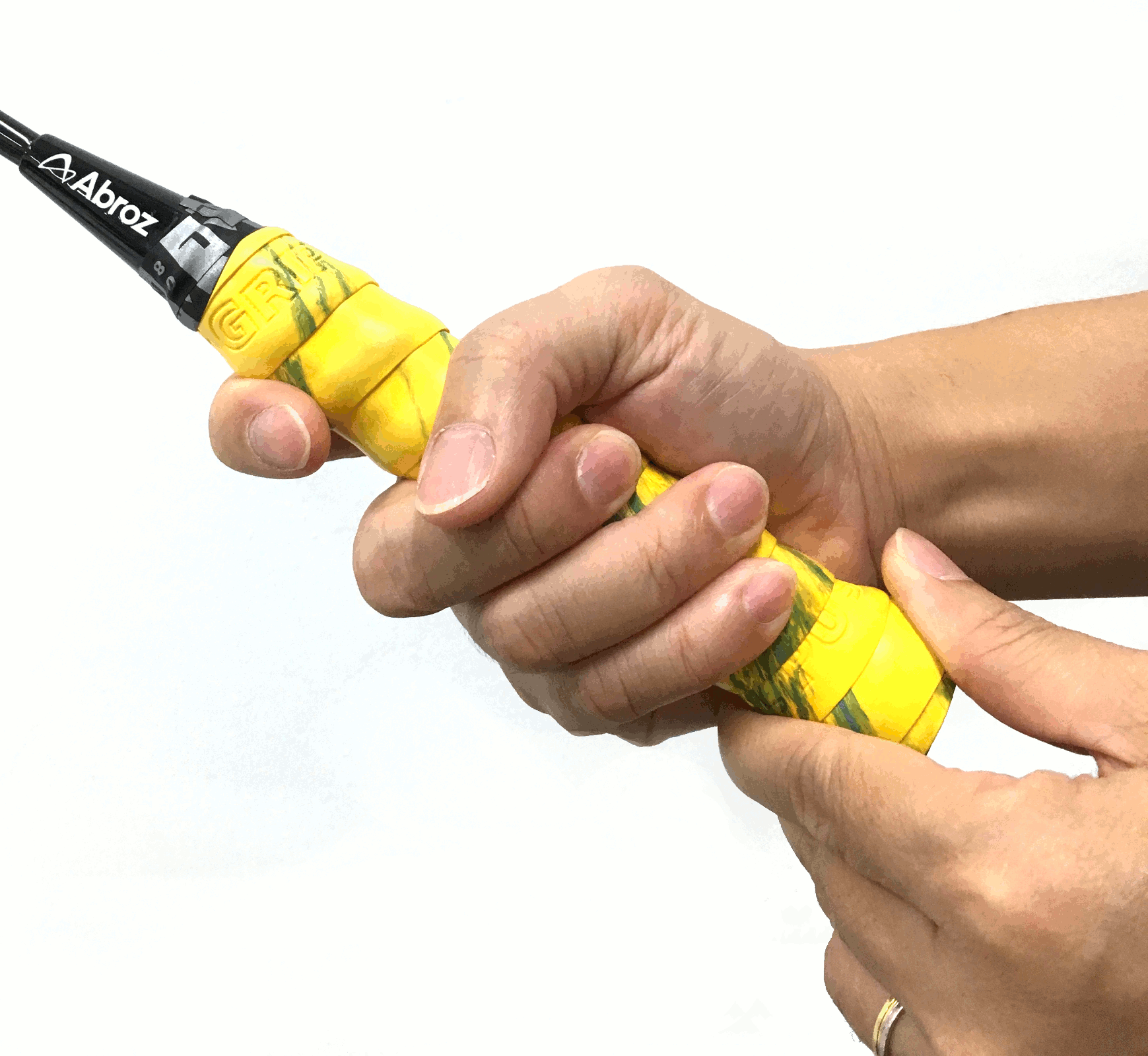
Notice the correct positions of fingers to follow in these different racket angle views.
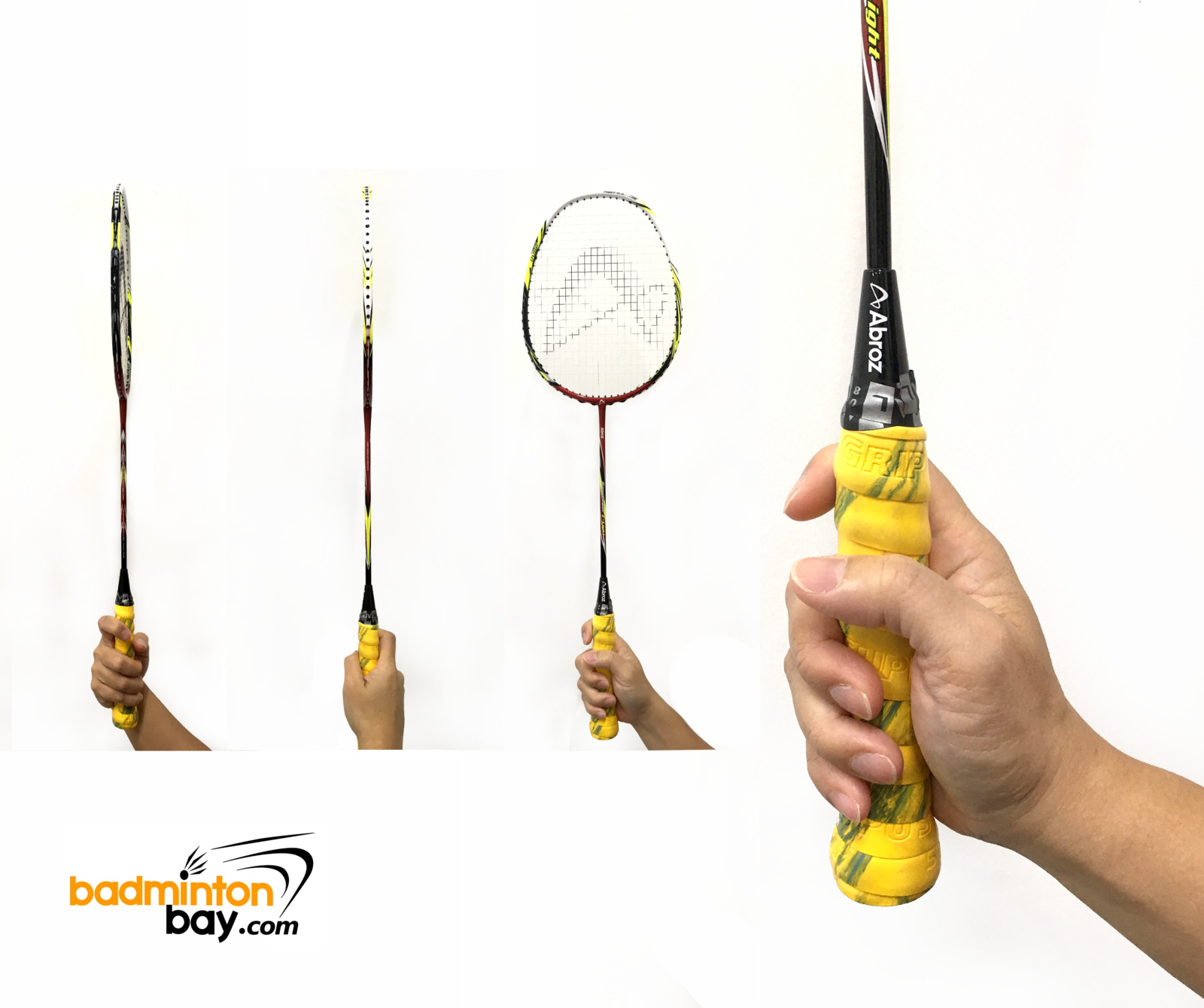 Below: A good guideline is to form a V-Shape between the thumb and index finger.
Below: A good guideline is to form a V-Shape between the thumb and index finger.
2) Backhand Thumb Grip
Players must be able to twist the racket fast enough in order to change and use different grip for backhand shots. With a backhand thumb grip, it will be easier for you to make the shot across the court.
The front of the racket head must constantly be facing the incoming shuttlecock for a successful return to opponent’s court. Thumb should be placed correctly on the racket handle where the front of racket frame is. This is because your thumb is the main driver to push the racket for all backhand shots.
Again, clench loosely on the handle and tighten only when hit is executed.
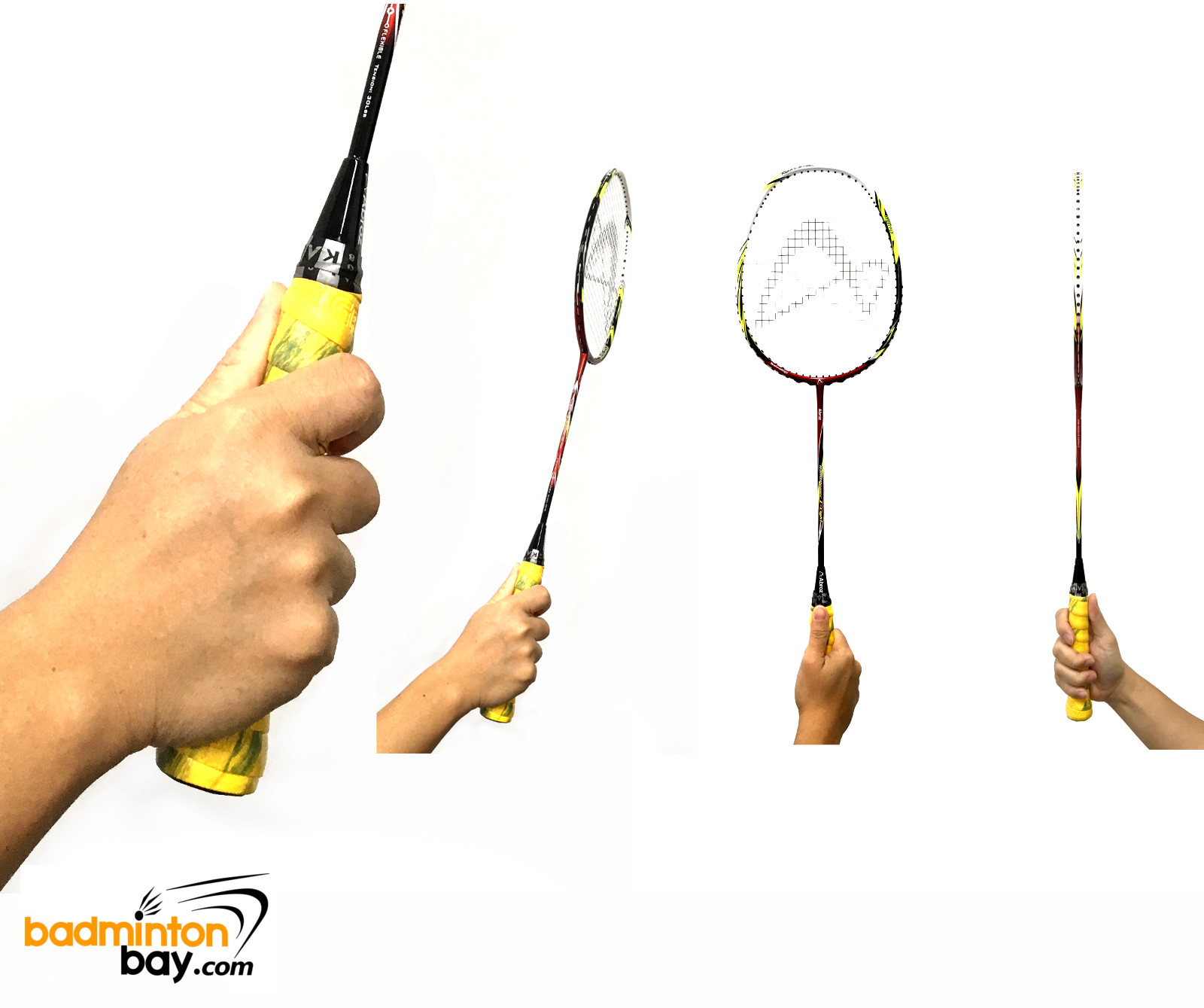
This grip can be useful for many kinds of strokes, a very good YouTube channel that will show you the right way to do it is the ‘Badminton Famly’ . In this roughly 6-minute amazing video, former world no. 1 Thomas Laybourn shows us 5 ways where you’ll be using backhand thumb grip.
Fastforward video to 3:10.
3) Backhand Bevel Thumb Grip
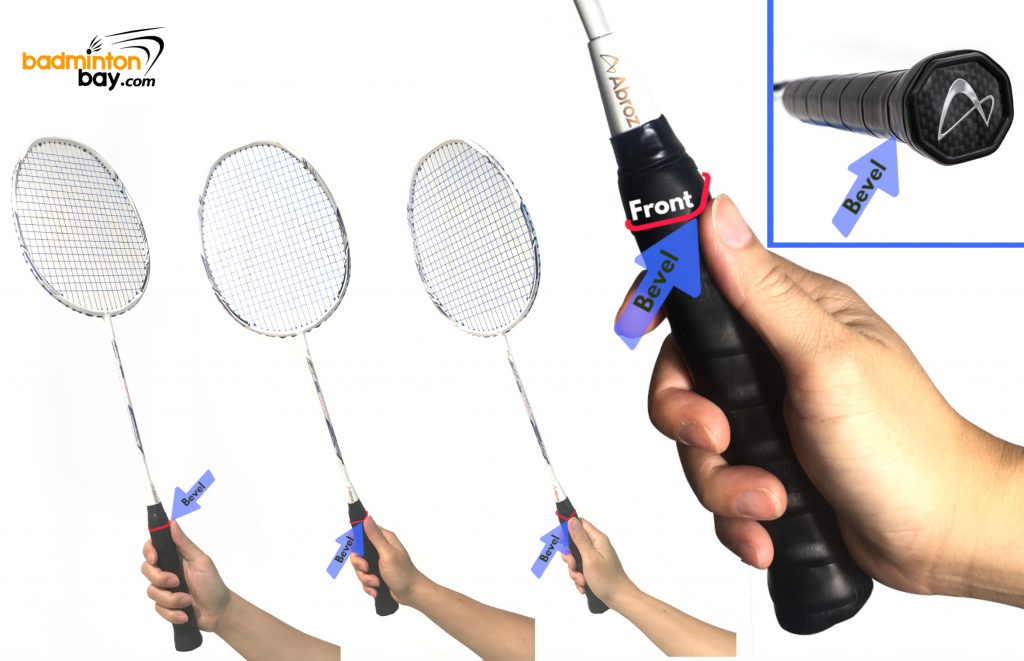
Unlike backhand thumb grip, bevel grip is more for applying defensive and deceptive shots.
For very good examples on how to apply this bevel grip, you may view this video from Badminton Famly.
The video also points out the difference between a forehand, bevel, thumb and hammer grip.
Besides that, this grip can also help you to do your high backhand clear effectively. The racket when held using the bevel grip, would prepare a perfect angle for you to execute the backhand clear.
4) Hammer Grip
Hammer grip is useful when you are executing jumping smashes. Remember how you hold a hammer?
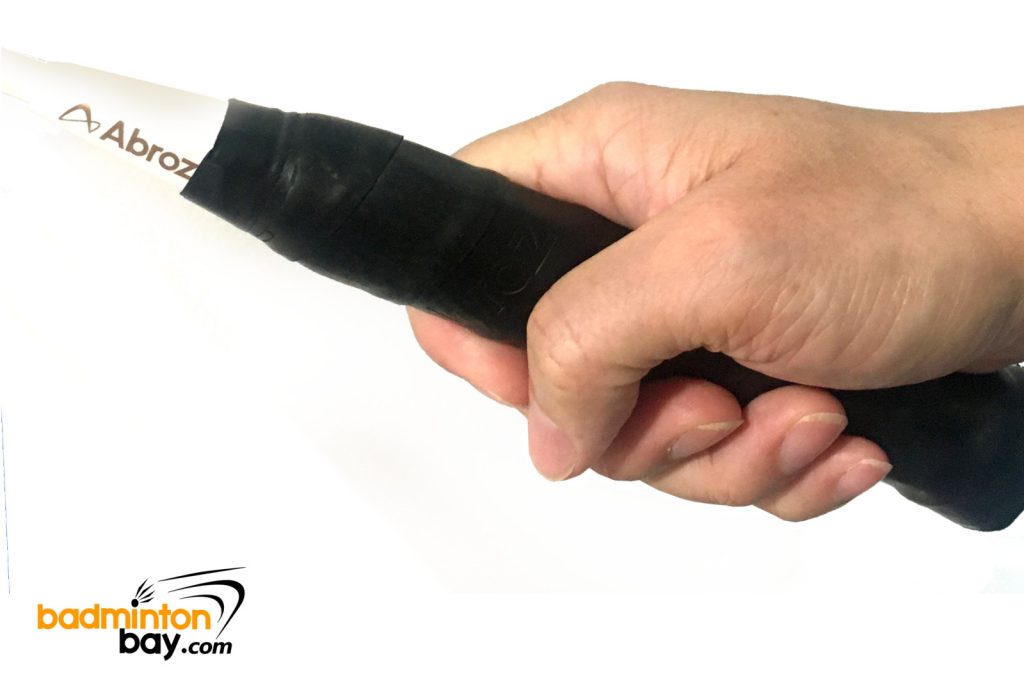
It simply starts with a forehand grip, rotate the grip swiftly to a hammer grip while you are swinging your arm during the jump and then tighten your grip when it’s time to hit the shuttlecock. Notice that you must not cover any fingers.
Watch Thomas Laybourn’s video in Badminton Famly YouTube channel for clearer explanation.
Fastforward video to 2:45.
5) Net Tap Grip or Pan Hold Grip
It’s called a pan hold grip because that’s the same way we hold cooking pans.
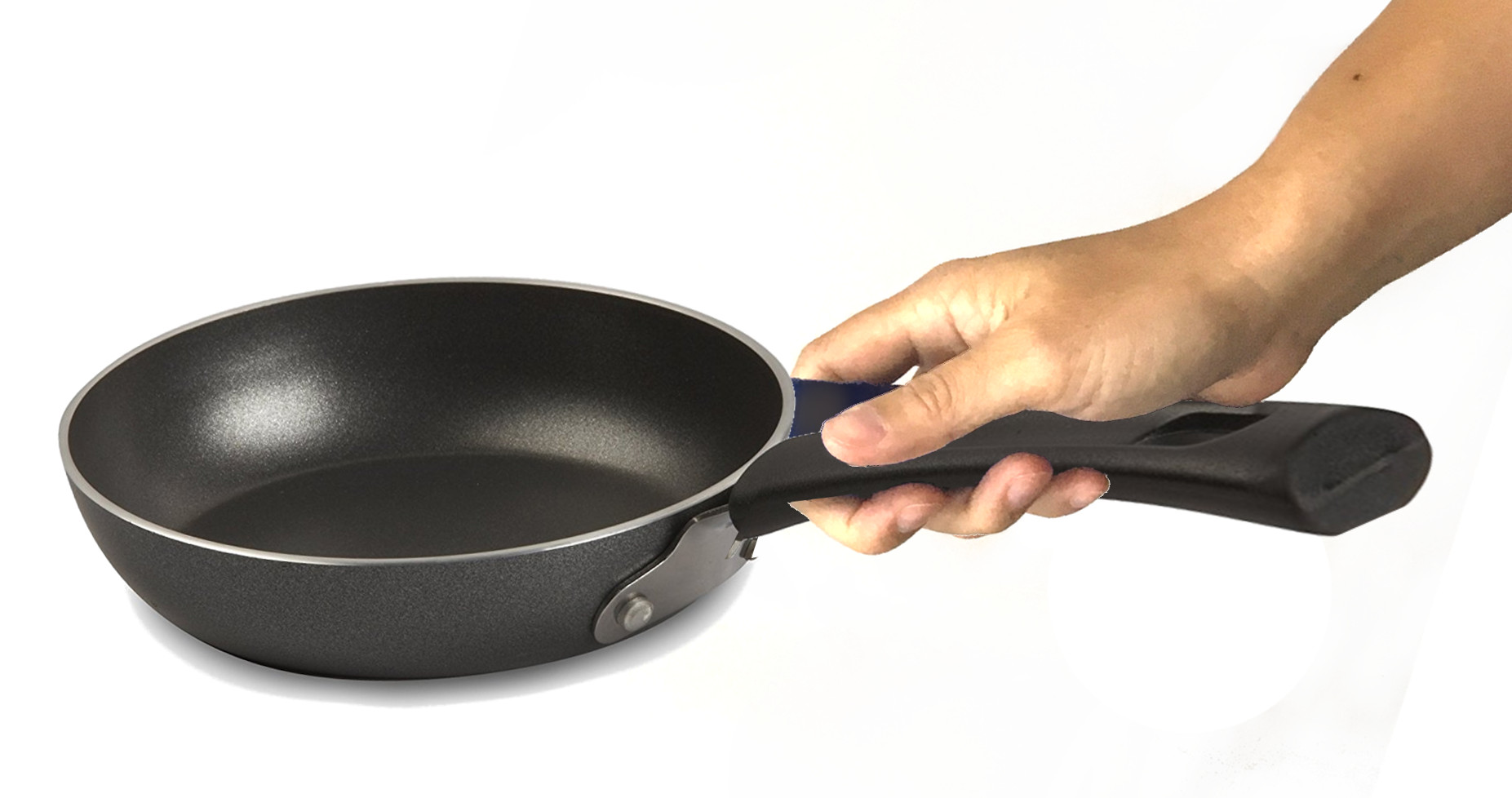
This is the kind of gripping needed on the front court near to the net when the shuttlecock is returned very closely to the net. At just the right moment before the shuttlecock starts to descend, a short tapping action needs to be executed.
Relax your fingers, gently hold the racket using thumb and fingers creating some space between racket handle and palm. You’ll be using your thumb, index finger and middle finger to do the tap. Fingers should be cradling the racket handle subtly until tapping hit is executed.
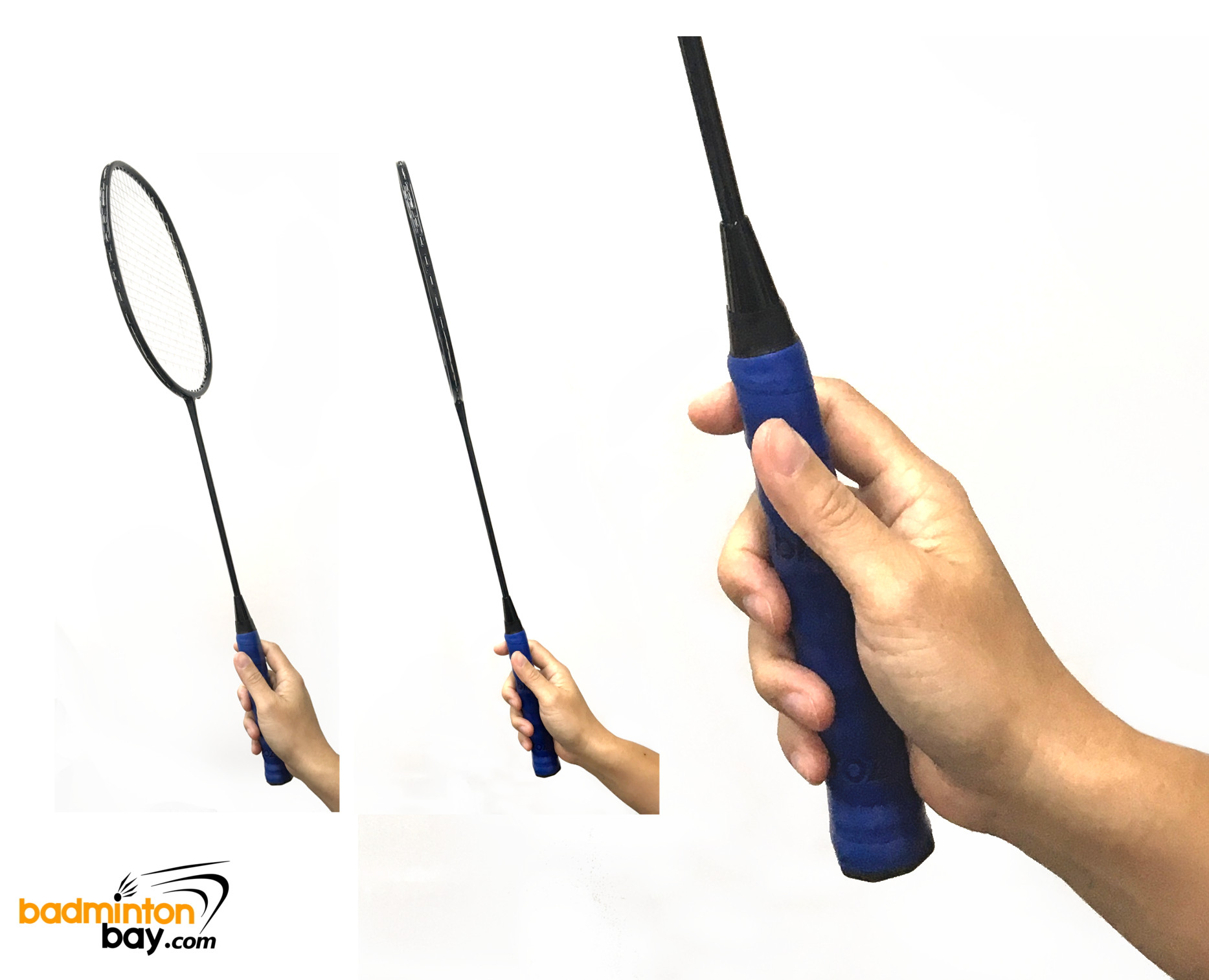
Incorrect Grip
Below : Thumb should not be covering any of your fingers as this would constraint the movement of racket. This kind of grip would allow little or no movement of racket at all.
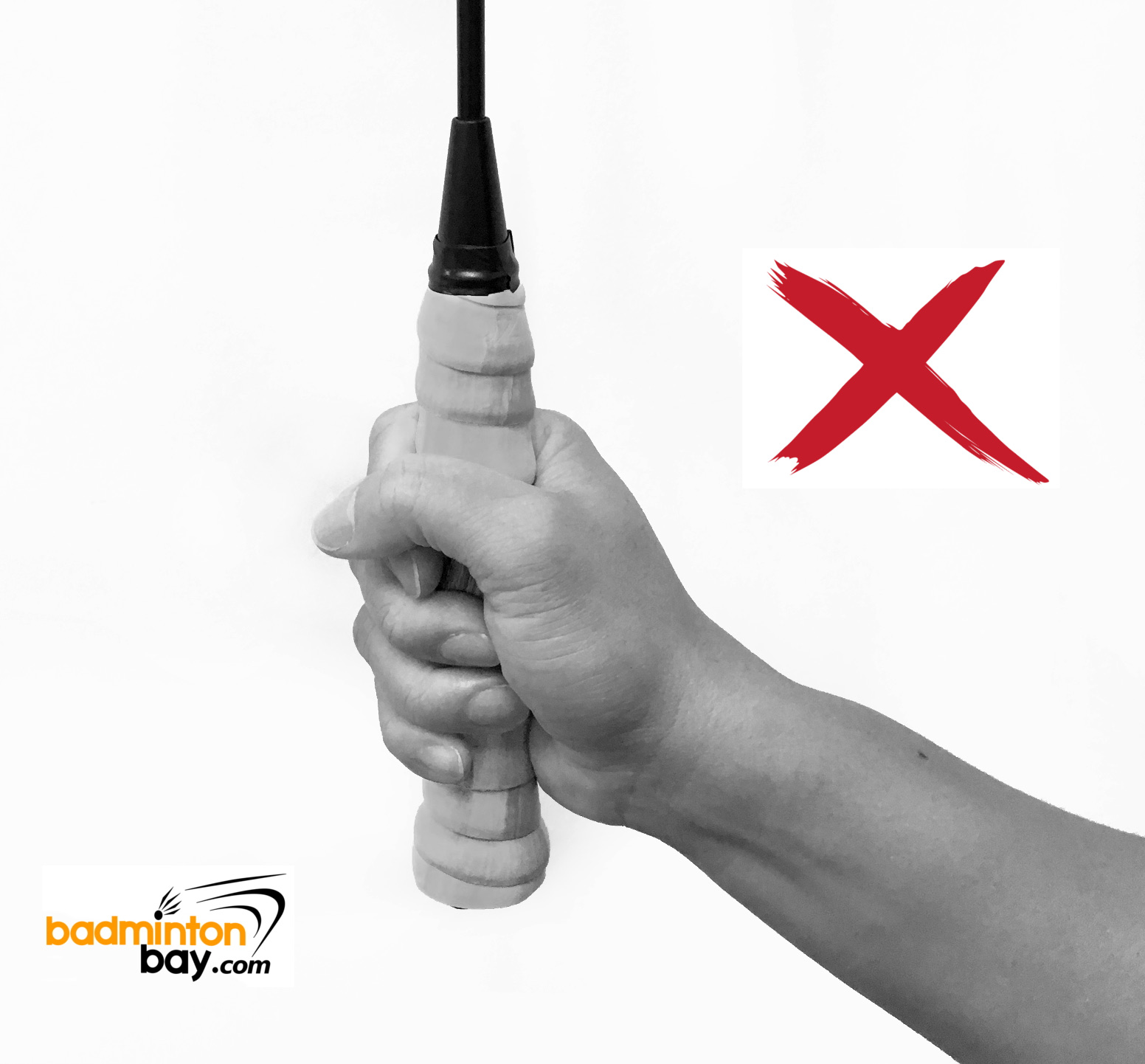
Below : Index finger should not be extended to prevent injuries. Index fingers must be bent and wrap the racket handle naturally.
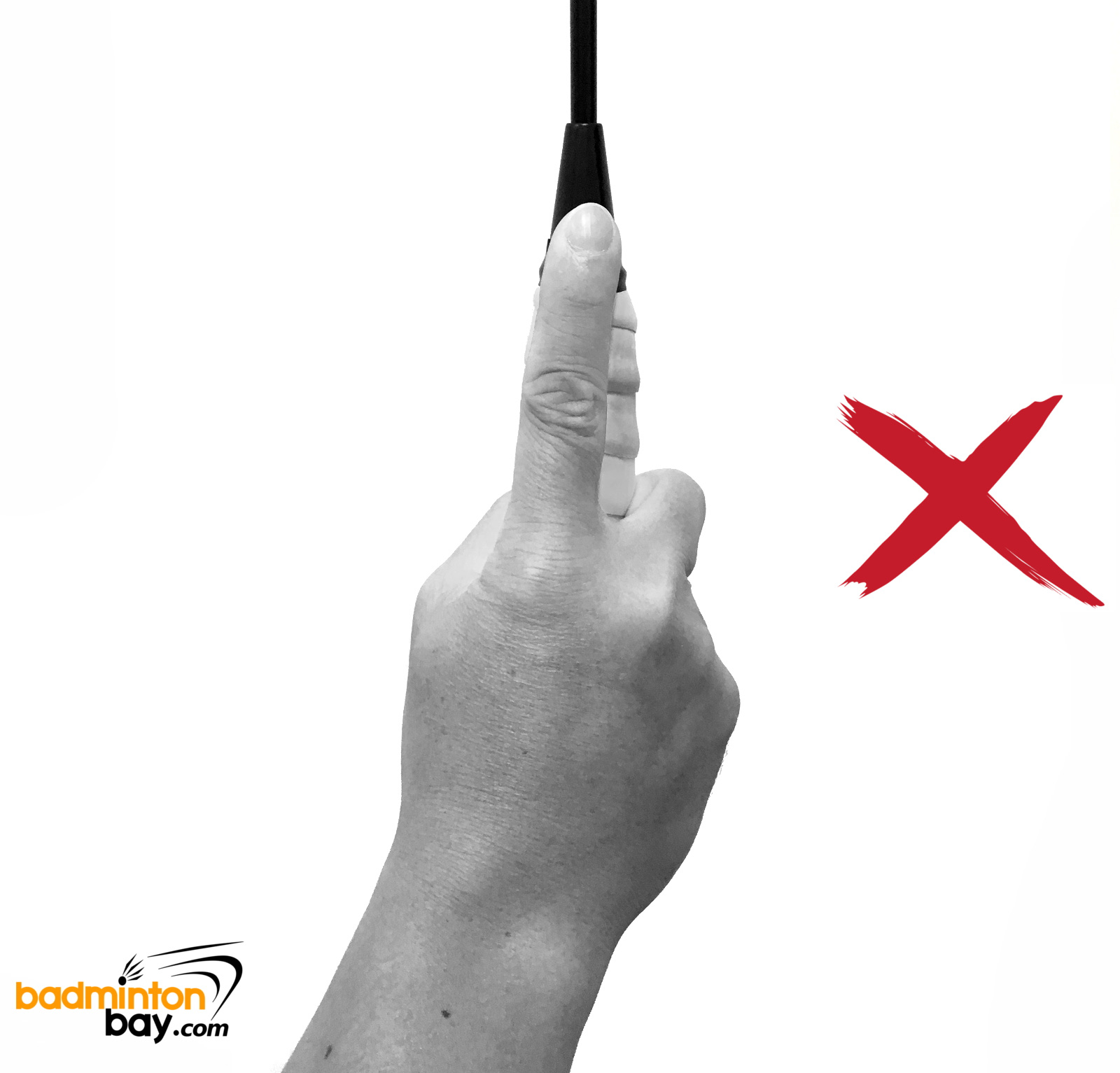
Below: If you place your grip this way, you would miss every shot as the shuttlecock would go nowhere with this. Notice that the thumb is on the handle where the side of racket is. 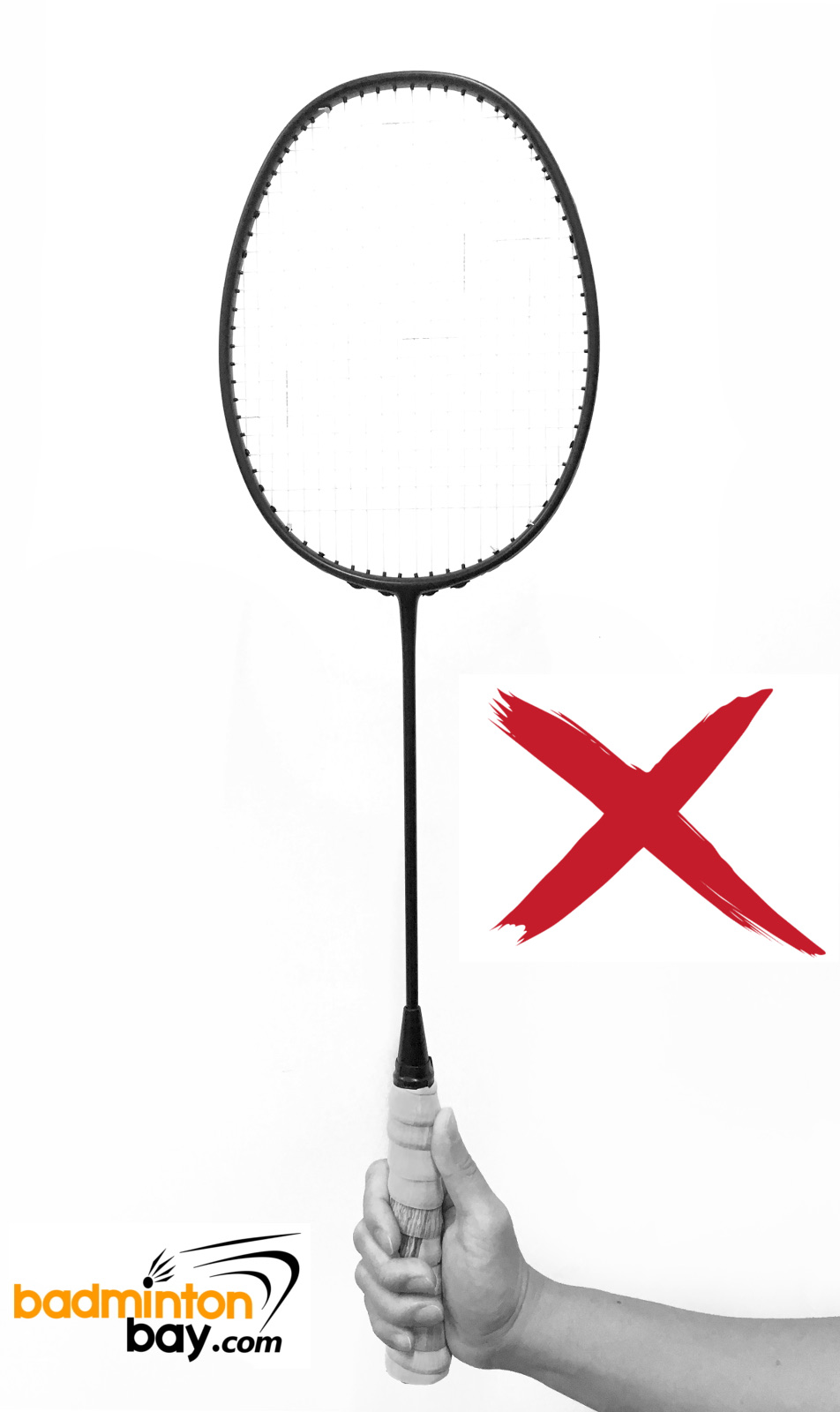
Let us know your experience on this subject in the comment section below.
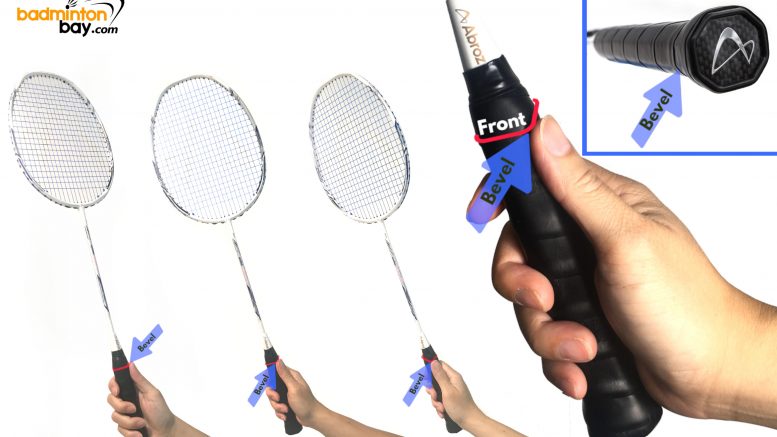
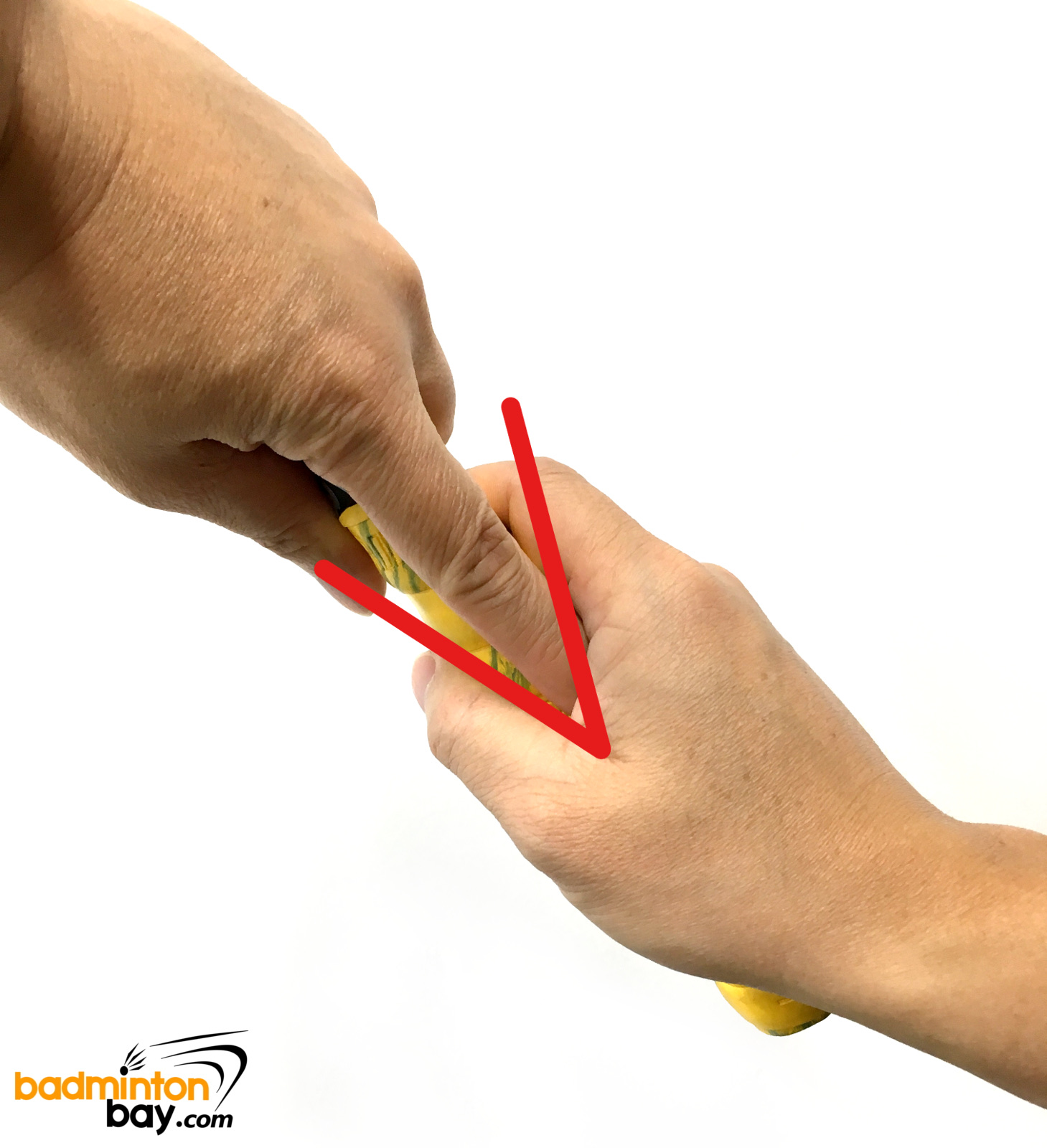
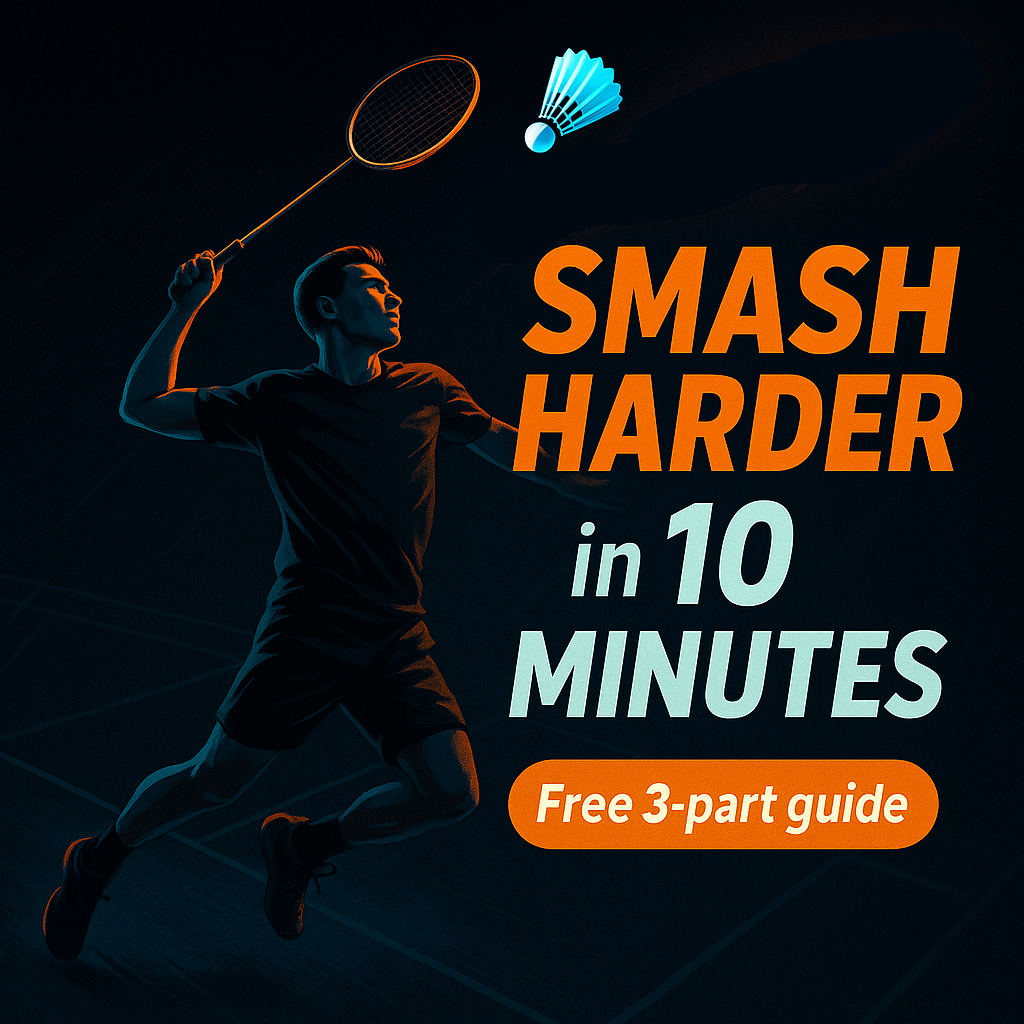
Your advice regarding the Hammer Grip is very misleading and WRONG!. The hammer grip and panhandle grip are one and the same grip. If you watch the Thomas Laybourn video that you’ve linked to, what he says is to move “slightly” from a basic/forehand grip “towards” a hammer/panhandle grip.
My shorts are not powerful. What can be done to improve them ?
Hi Ahuja,
We have just launched our new badminton training program. Hope it can help our followers and badminton enthusiasts enjoy badminton a little more. Keep following our blog posts.
This is the first part of our badminton training program.
https://www.badmintonbay.com/blog/badminton-improvement-program-part-one-weight-vs-power/
– BadmintonBay.com
Thank you for demonstrating the different types of grips, strokes, smashes, defence techniques etc. We found the information very helpful.
Thank you so much for demonstrating the different types of grips, strokes, smashes, defense techniques etc.
Want to check if my yonex racket is original
Serial no
2616525 1204006SP
Hi Sunil,
You may check with your country’s main distributor for Yonex and they’ll tell you if the racket you bought is from an authorized source.
Hope this helps!
Have a great day!
– BadmintonBay.com
Hi Thomas
Thank you so much for demonstrating the different types of grips, strokes, smashes, defense techniques etc. I sometimes experience less power while smashing from the back of the court when I hold the racquet with a short grip ie by gripping at the middle part of the shaft whereas I could hit with more power by using a long grip ie by gripping at the lower part of the racquet shaft . And also I normally could get more powerful backhand strokes from the back court with a short grip wheras I have to use the long grip for a better reach for the forehand strokes. This necessitates changing from short grips to long grips from backhand to froehand grips especially for clear and drive shots. Is it the right way or am I need to change? Pls explain.
Thank you
Best regards
Hi Joseph,
Thanks for dropping by.
Yes, you may use whatever grips that work best for your performance. As long as the basic grip is correct, your shuttlecocks will go wherever you need them to.
By the way, Thomas’ videos belong to Badminton Famly channel in Youtube. We don’t own any of them. We are only sharing them here.
Have a nice day!
– BadmintonBay.com
This is a great instruction article! its always important to develop strong fundamentals before trying any advanced shots (like the smash, which everyone wants to see and learn about on youtube it seems). The longer you go playing with improper grip, the harder it will be to learn the right grip, so always practise the correct technique!